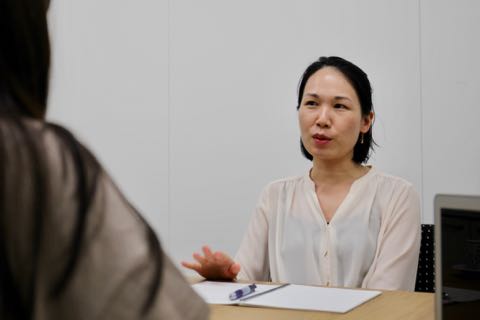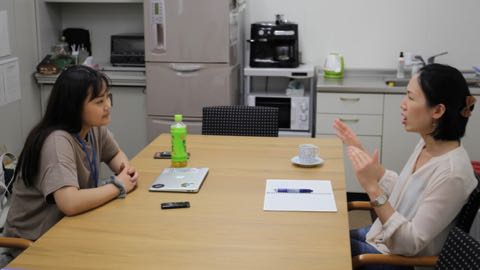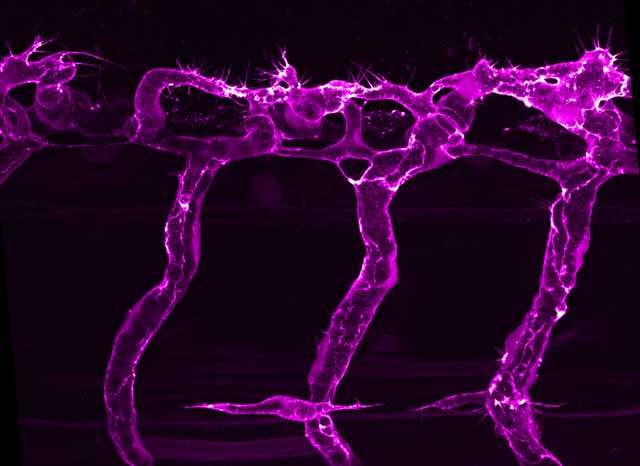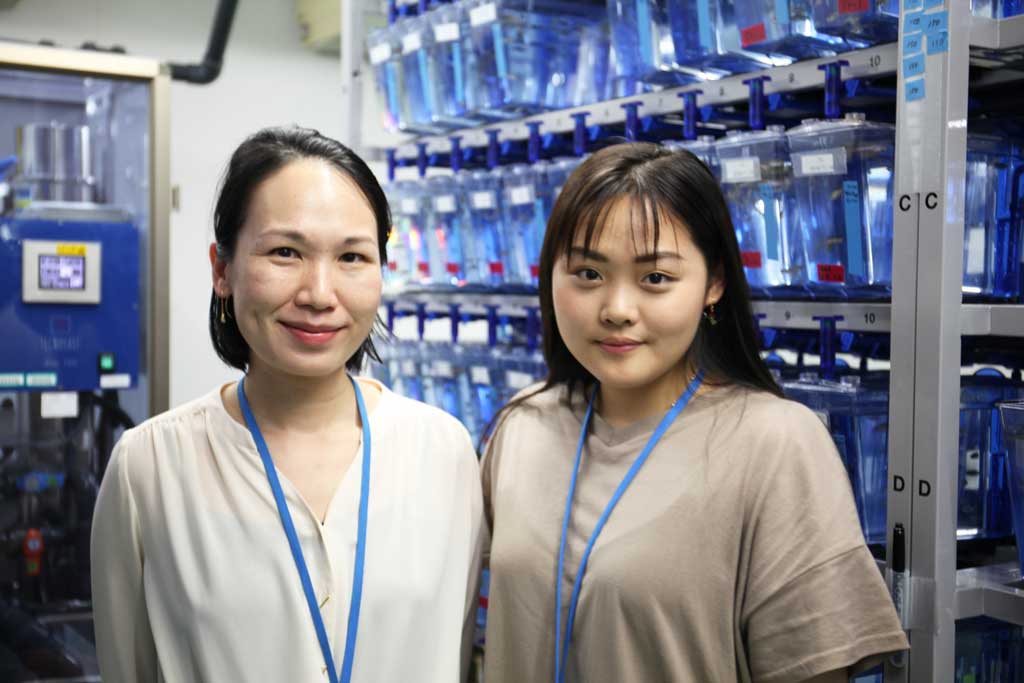Falling into a career path in research
BDR Team Leader
Li-Kun Phng
Interviewed by Emily Bian (right in top photo)
(Intern from University of Wisconsin-Madison)
Q: How did you get started in research?
A. Well, you’ve probably met some people who knew from when they were very young that they wanted to be a scientist, but I wasn’t like that at all. It just progressed from interests, really. I went to school in the UK, and at the time I was interested in biology, so I studied a biology related subject—pharmacology. But after having spent one year as an internship student in a pharmaceutical company in Switzerland, I realized that it wasn’t the type of research I wanted to do. After finishing my degree, I was stuck on what I should do. I then did a Master’s degree in Life Sciences; it was quite general but I enjoyed it a lot. It was a one-year research-based course that allowed me to go to three different labs that work on three different research topics. I subsequently decided to pursue a PhD in Life Sciences and was awarded a Graduate Studentship position in Cancer Research UK London Research Institute (now part of The Crick Institute). I have been on this path ever since.
Q: Do you ever find that you need to go above and beyond to prove yourself as a female team leader in the research industry?

A: Well first of all, I had spent many years working in Europe and there, especially in biology, you see more representation by women. When I came to Japan, I was very shocked to see fewer women in research. Although there are women working in labs as students and postdocs, the number drops off drastically at PI positions. This is of course a global problem, but it is much more prominent in Japan. I therefore cannot help but wonder what is being done to recruit and retain women in these positions in BDR. I think that more action needs to be taken as there will otherwise a brain drain. To be honest, it is quite isolating to be one of the very few women team leaders here so it would be fantastic to welcome more of us to BDR.
As for whether or not I have to stand up more as one of the few female team leaders to prove my worth, I do not know because, honestly, this is still a new role for me and everything is a challenge! I just try to do my best . . .
Q: Do you find any difficulties working in Japan as a foreigner?
A: I didn’t come to Japan knowing much or any Japanese so it is quite challenging to work and live here. However, the great thing about BDR is that most of the science is conducted in English. I know that the administration in the Promotion Office takes a lot of time to translate documents into English—or maybe it’s just for me—and I really do appreciate it. Additionally, my assistant (Emi Taniguchi) is doing a great job acting as a mediator between my lab and the rest of the institute (and Japan) during the setting up and running of my lab. However, I have to point out that although there is a lot of language support in BDR, one should not expect it in other institutions in Japan as prior to working here, the previous Japanese lab I worked at was nearly all in Japanese.
Another challenge that I faced were cultural differences. However, this was resolved with time.

Q: Can you explain a little bit about the research you are currently doing?
A: In the simplest form, my lab aims to understand how blood vessels are formed. As you know, our bodies depend on a network of blood vessels to distribute oxygen and nutrients to every tissue to support their function. We are interested in understanding how blood vessels are shaped and patterned into a hierarchical network of arteries, veins and capillaries of different sizes as this is essential for optimal blood perfusion. We use the zebrafish as our model system. As the embryos are optically transparent, we can easily perform live imaging to visualize and investigate the behavior of endothelial cells, which are the basic building blocks of blood vessels, to understand the process of the blood vessel development.

